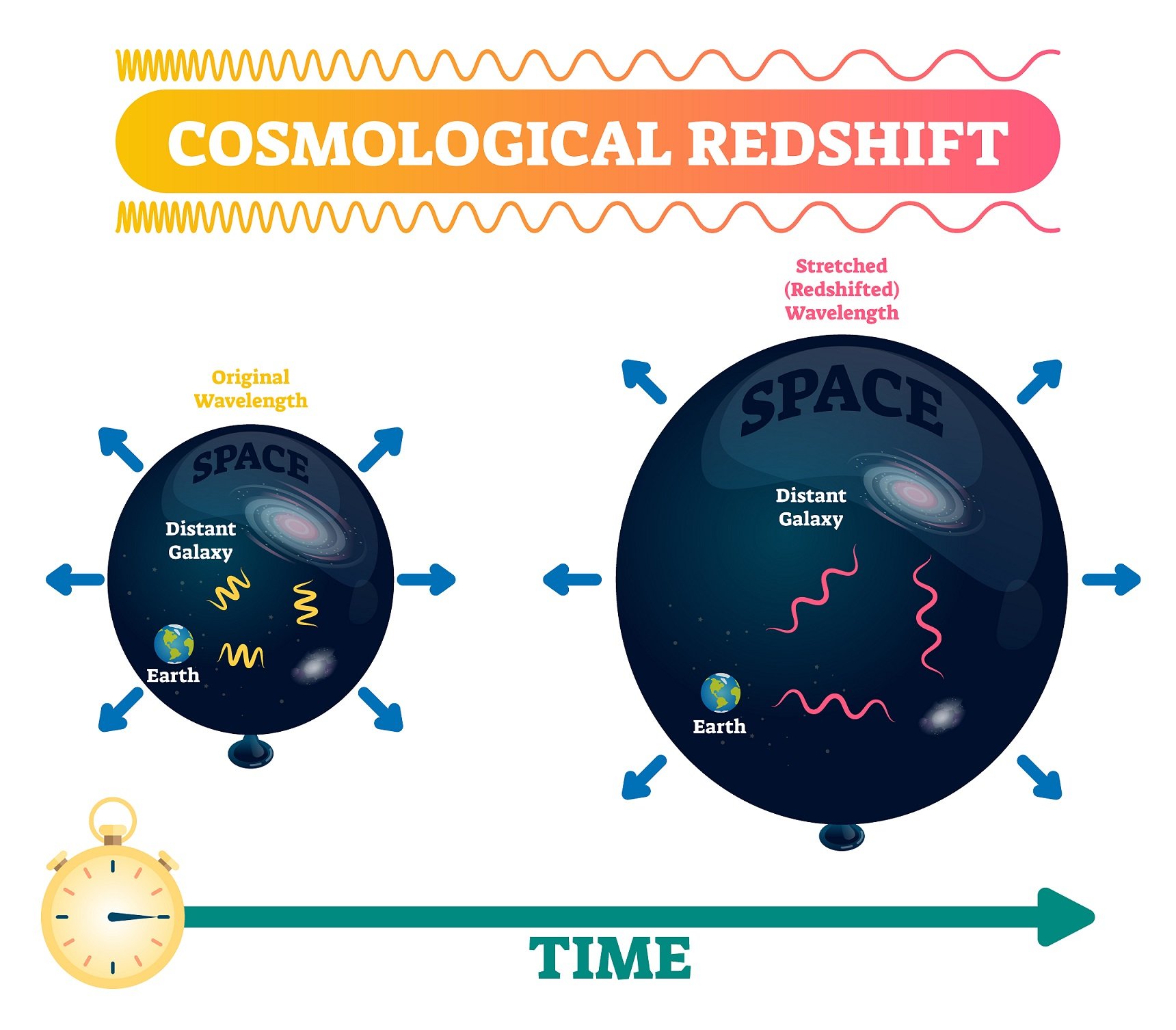An international team of astronomers has witnessed the seemingly impossible using NASA's powerful James Webb Space Telescope. They observed six galaxies in the early universe that are so large that they should not exist according to our current cosmological understandings.
A mosaic has been compiled featuring a sector near the Big Dipper, accompanied by insets highlighting the locations of the six discoveies from the early universe. - (click on image to enlarge)
Image Credit: NASA, ESA, CSA, I. Labbe (Swinburne University of Technology). Image processing: G. Brammer (Niels Bohr Institute’s Cosmic Dawn Center at the University of Copenhagen).
Never before have galaxies of this size been observed so shortly after the Big Bang, and it is turning the world of astrophysics upside down. It may even have implications that go as far as revamping our understanding of the origins of galaxies in the universe.
Looking back in time
The James Web Space Telescope (JWST) is outfitted with infrared-sensing instruments that can detect light emitted by the most ancient galaxies. Basically, the telescope lets scientists see about 13.5 billion years back in time, close to the birth of our universe.
How is this possible, and why do we need high-end infrared instruments to do this? The time it takes for light to travel from one location to another means that the objects we perceive are not in their current state but rather as they were when the light they emitted began its journey across the cosmos toward us. Consequently, by studying increasingly distant objects, astronomers can delve deeper into the past and observe events that occurred further back in time.
So why do we need infrared instruments for that? This has to do with a phenomenon known as redshift. The universe is expanding, and when objects move a great distance away from us, the spectrum of emitted light (or other electromagnetic radiation) shifts to 'red,' i.e., the wavelengths are stretched when we receive them. Objects in the early universe have experienced so much redshift that their light has been stretched out of the visible spectrum into the infrared.
Cosmological redshift - I(mage Credit: VectorMine via Shutterstock)
Further reading on the size of our universe: Putting unfathomable astronomical distances into a human perspective (Universal-Sci)
To bright to be real
Back to the recent discovery: the research team reexamined some of the first images that the JWST produced. Co-Author of the underlying paper, Erica Nelson, called the discovery "bananas." She was peering at part of a postage stamp-sized image when she noticed something strange: a pair of strikingly bright "fuzzy dots" that looked way too bright to be real.
Upon closer inspection of the peculiar fuzzy dots, it turned out that the galaxies were not only very, very old but also enormous in size, consisting of tens to hundreds of billions of stars, similar to our own Milky Way.
The strange thing is that at this point in time, the universe was only 3% of its current age (approximately 600 million years after the Big Bang). Researchers had expected only to find small baby galaxies at this stage, but instead, they found galaxies that seem as mature as our own. Nelson: "You just don't expect the early universe to be able to organize itself that quickly. These galaxies should not have had time to form."
A closer look at the six extremely young candidate galaxies. - The galaxy pictured at the lower left may contain as many stars as our Milky Way, but at the same time it is thirty times more compact
Image Credit: NASA, ESA, CSA, I. Labbe (Swinburne University of Technology). Image processing: G. Brammer (Niels Bohr Institute’s Cosmic Dawn Center at the University of Copenhagen).
Keeping an open mind
Joel Leja, one of the authors of the study, stated that we have to keep an open mind about what we are actually looking at.
Leja modeled the light from these ancient galaxies. Leja: "While the data indicates they are likely galaxies, I think there is a real possibility that a few of these objects turn out to be obscured supermassive black holes."
Nevertheless, the amount of mass that the team discovered implies that the known mass in stars at this early phase of our universe is up to 100 times larger than expected. Leja: ''Even if we cut the sample in half, this is still an astounding change."
Leja expressed some ideas on how to test their findings. One way is to take a spectrum image of the massive galaxies. This will provide data on the actual distances while also revealing gases and other components that make up these galaxies. Researchers can then use this information to paint a clearer picture of what the galaxies look like and how large they really are.
Even though it is still early in its life, the James Webb Telescope once again proves its worth; thanks to its amazing high-resolution instruments, it has given us a view of the early universe we have never seen before.
The team published their findings in the peer-reviewed science journal nature (listed below for those that are interested).
Sources and further reading:
Too busy to follow science news during the week? - Consider subscribing to our (free) newsletter - (Universal-Sci Weekly) - and get the 5 most interesting science articles of the week in your inbox
FEATURED ARTICLES:










